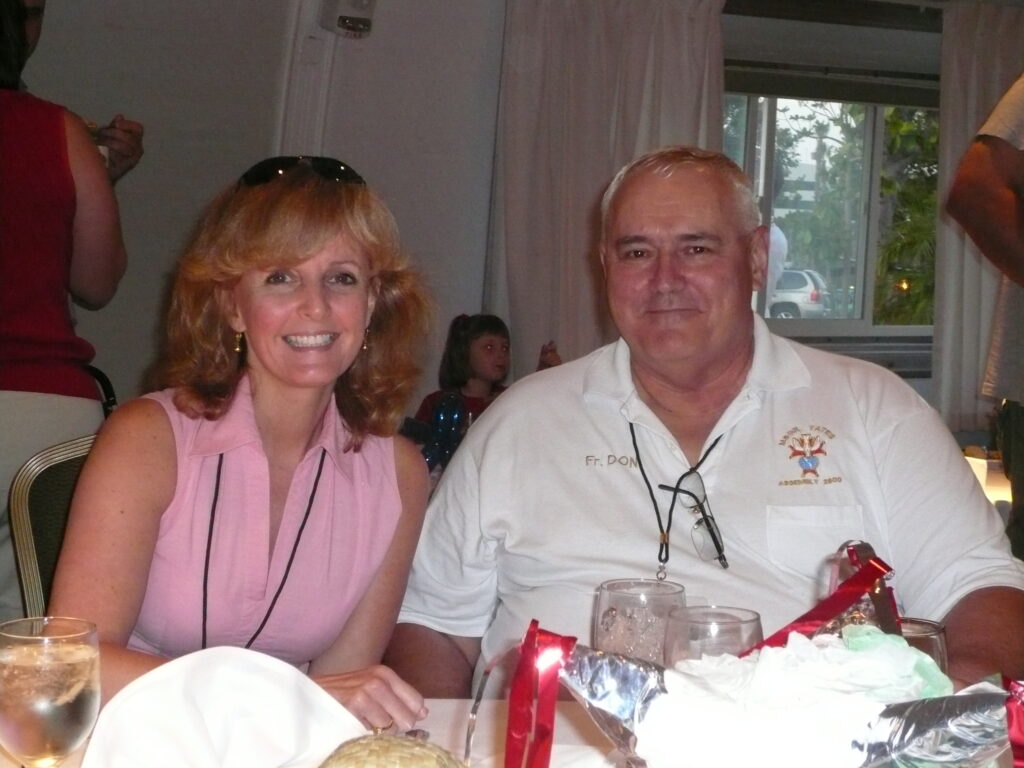Philippine Journal: Day 7
Friday, October 17: This was the kind of day you simply live for when traveling to developing countries for hemophilia. Now in Cebu, second largest city in the Philippines, Rose Noyes, Father Don Kill, Andrea Trinidad-Echavez (a patient with VWD and mother to a daughter with VWD) and I went to the Perpetual Succor Hospital to meet with the hematology team. But we heard that there was actually a patient admitted to the ward so we went to check it out. There in the overcrowded pediatric department was a one year old baby, Christian, who was bleeding from his head. The mother was breastfeeding him, trying to quiet him. They both looked uncomfortable: She was standing in the middle of a busy hallway; he was wrapped in a bloodied bandage, with an IV stuck in his foot. We spoke with the nurses who told us Christian had fallen last week. He had received fresh frozen plasma (FFP) but the bleeding continued. Feeing helpless and sad, I recalled I happened to have stuck a vial of factor in my purse to show reporters later at our press conference. I took it out and everyone’s eyes lit up. I might as well have taken out a bar of gold!
The nurses at once administered the factor VIII concentrate to the baby. The mother was a little wary of me, but when she learned I also had a son, and that we would enroll her in Save One Life, her face relaxed into an expression of gratitude.
It hits me hard to think that not only do countries like the Philippines not get factor (only the very wealthy will buy it out of pocket), but patients must purchase FFP or cryo! Indigent patients like Christian’s mom go to the public hospital where they received free medical services, but not medical items. All patients must pay for gauze, needles, syringes, bandages, and blood products. A bag of FFP costs about $30 US. This is one half to one month’s salary for a family.
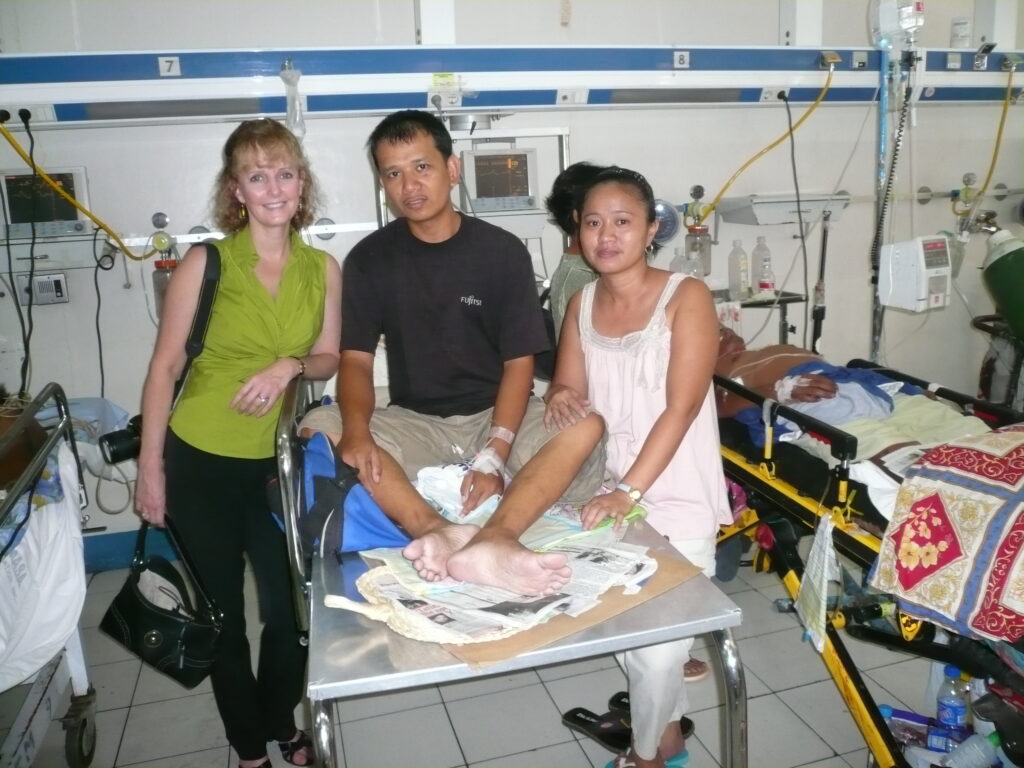
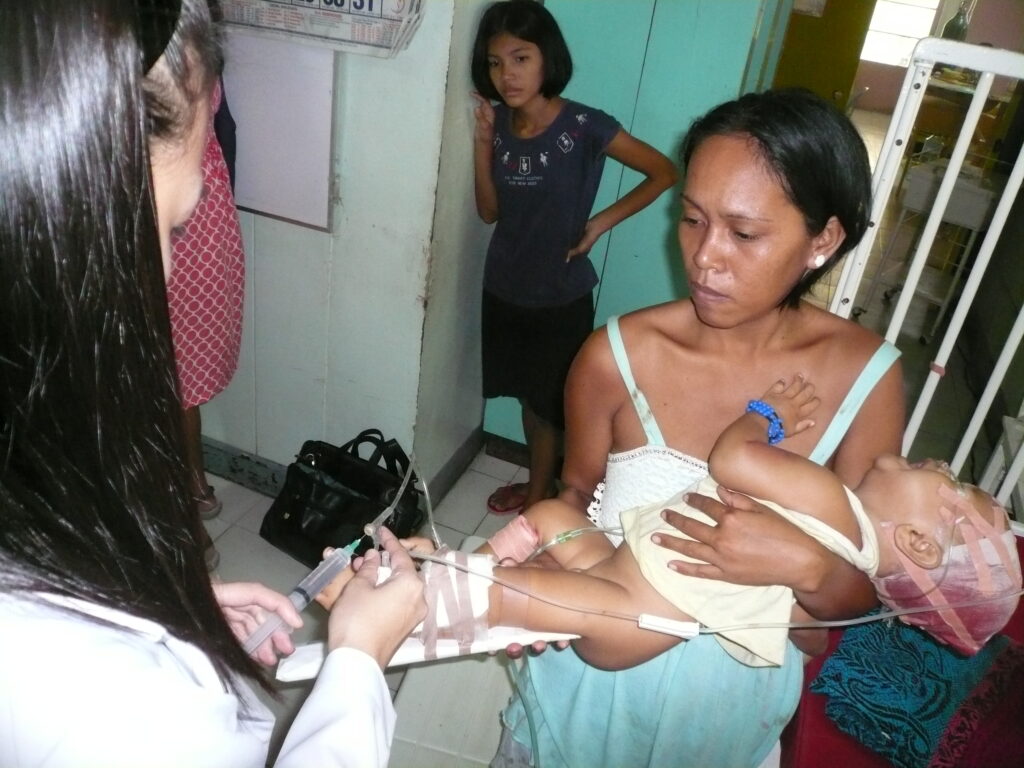
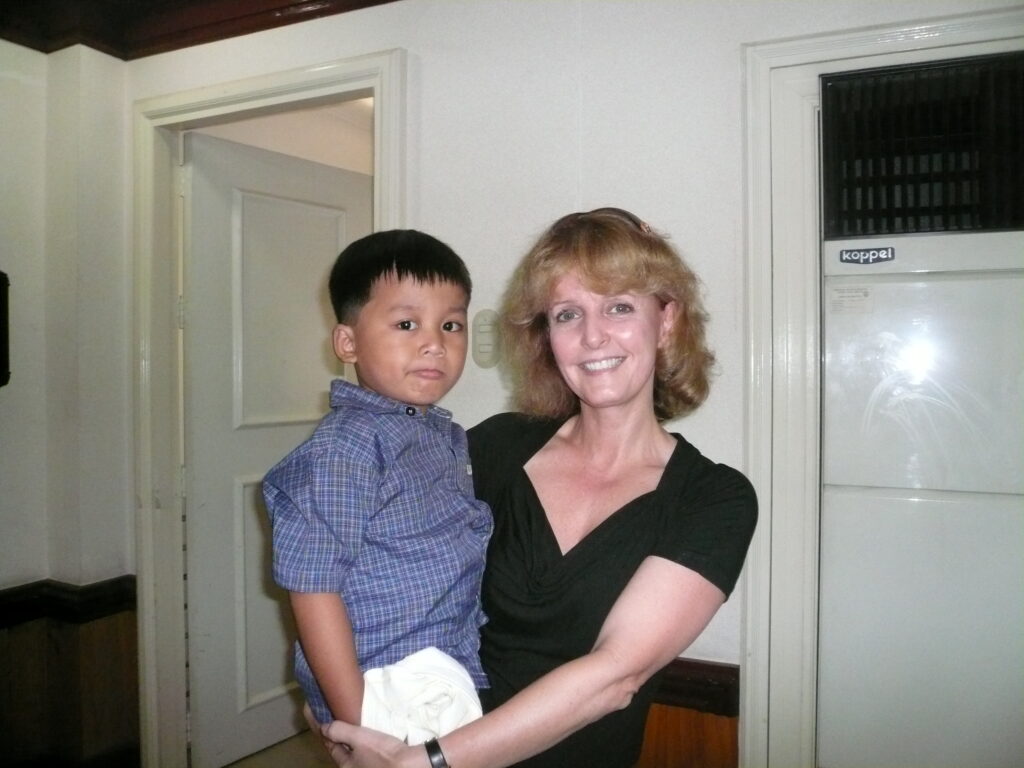
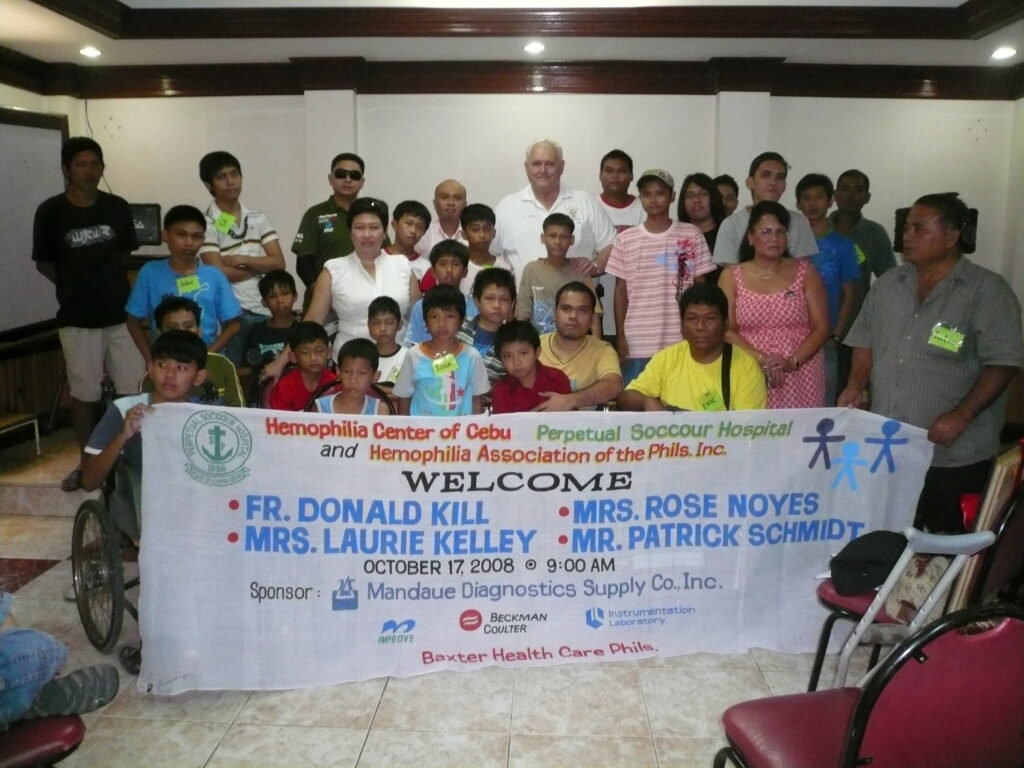
Satisfied with the happy outcome, we then were ushered into a room jam packed with families with hemophilia. These were patients registered with the local hemophilia organization, HAP-C (Hemophilia of the Philippines, Cebu). This is a well run group, and the sheer number of families attending attests to their good rapport with the community and ability to organize. Everyone looked so happy to see us. We had some presentations. A young man named Ed stood up and told us that he won’t let hemophilia stop him from attending college and becoming an employee some day. Another young man, Jurich, also stoop to give a testimonial about how he will not let hemophilia defeat him. Jurich could be a motivational speaker some day!
We then had to excuse ourselves to give some presentations to a large group of residents in the auditorium. I looked up and saw a banner with all our names printed on it to welcome us. We spoke about the importance to learn about hemophilia, to treat the patients at once, to work with HAP-C, and to listen to parents when they tell you, as doctors, something is wrong. Andrea gave an important perspective on VWD, which is largely undiagnosed in the Philippines. Thanks to Andrea, who used to be a reporter with the national newspaper Inquirer, had an interview with the press afterwards. The reporters published their articles the next day, and gave an excellent overview of our meeting and of hemophilia.
After this meeting we returned to the most important people on the face of the earth, the hemophilia families We told them that we were enrolling everyone in Save One Life, our child sponsorship program, and that the money could be used to help pay for school, transportation to the clinic, or FFP or cryo. Father Don stressed that they continue to work with HAP-C, and to be empowered.
See photos of the whole trip here.
You might think how hard it must be to feel empowered when there is no factor, and when a family cannot afford even cryo. But you would be amazed at the resilience we see here. Families come to meetings, even when there is nothing to offer but snacks. Families have hope. I don’t doubt that the pervasive faith I see everywhere on these islands helps not only to cope with hemophilia, but helps them to bond together. As a community, they are strong. But they are in great need. I looked forward to our next leg of the trip, where we would go to more rural communities in the south. We said our good byes to the families, pledging to stay in touch and to offer assistance.


